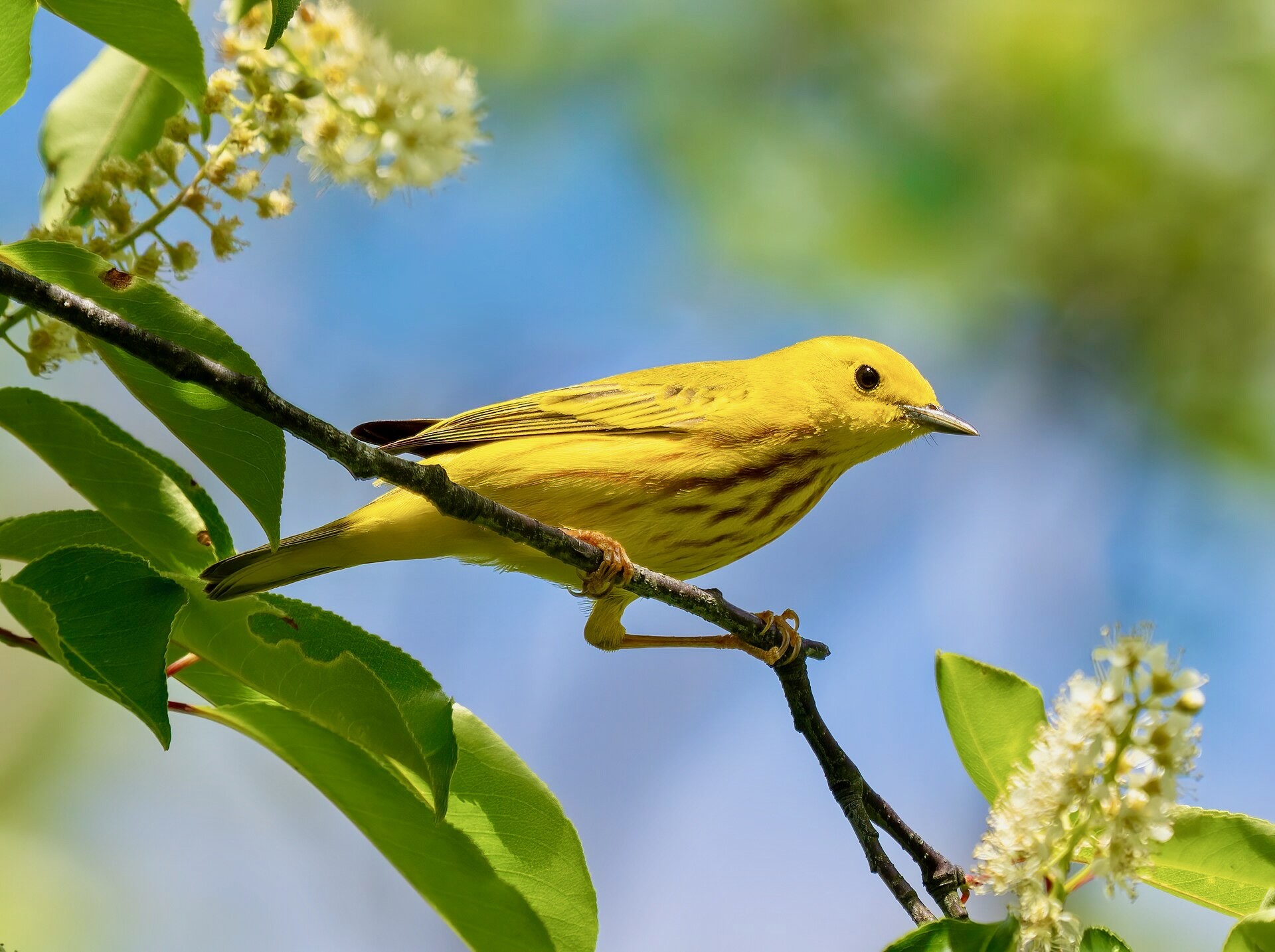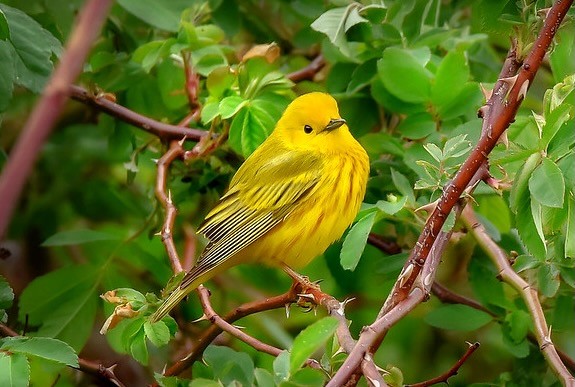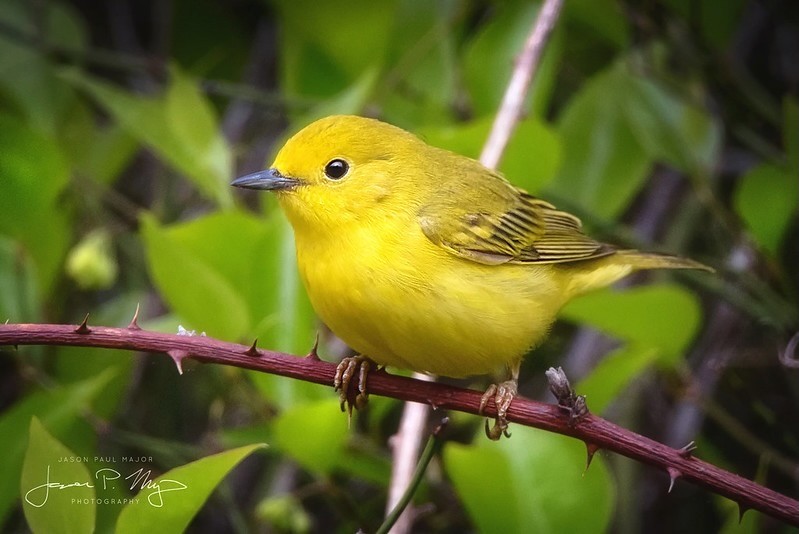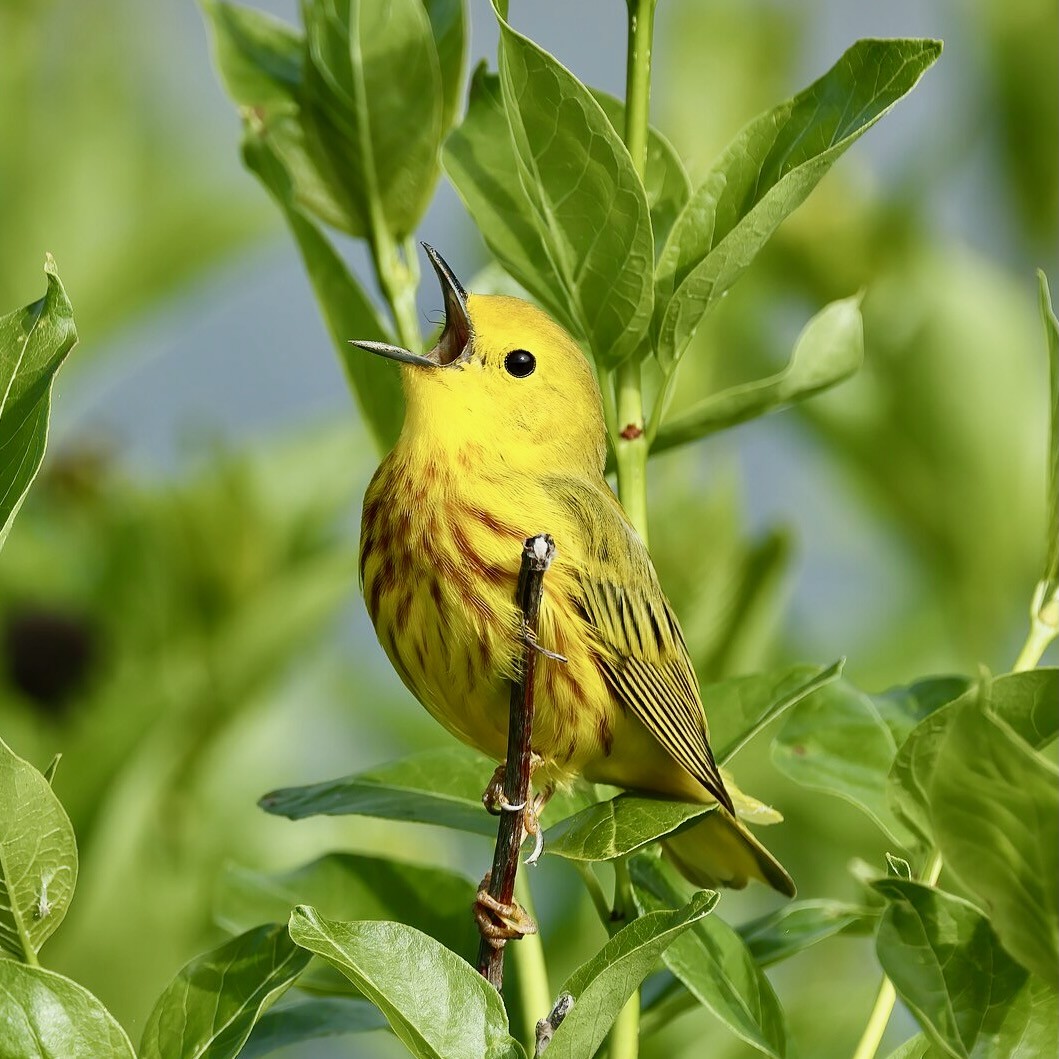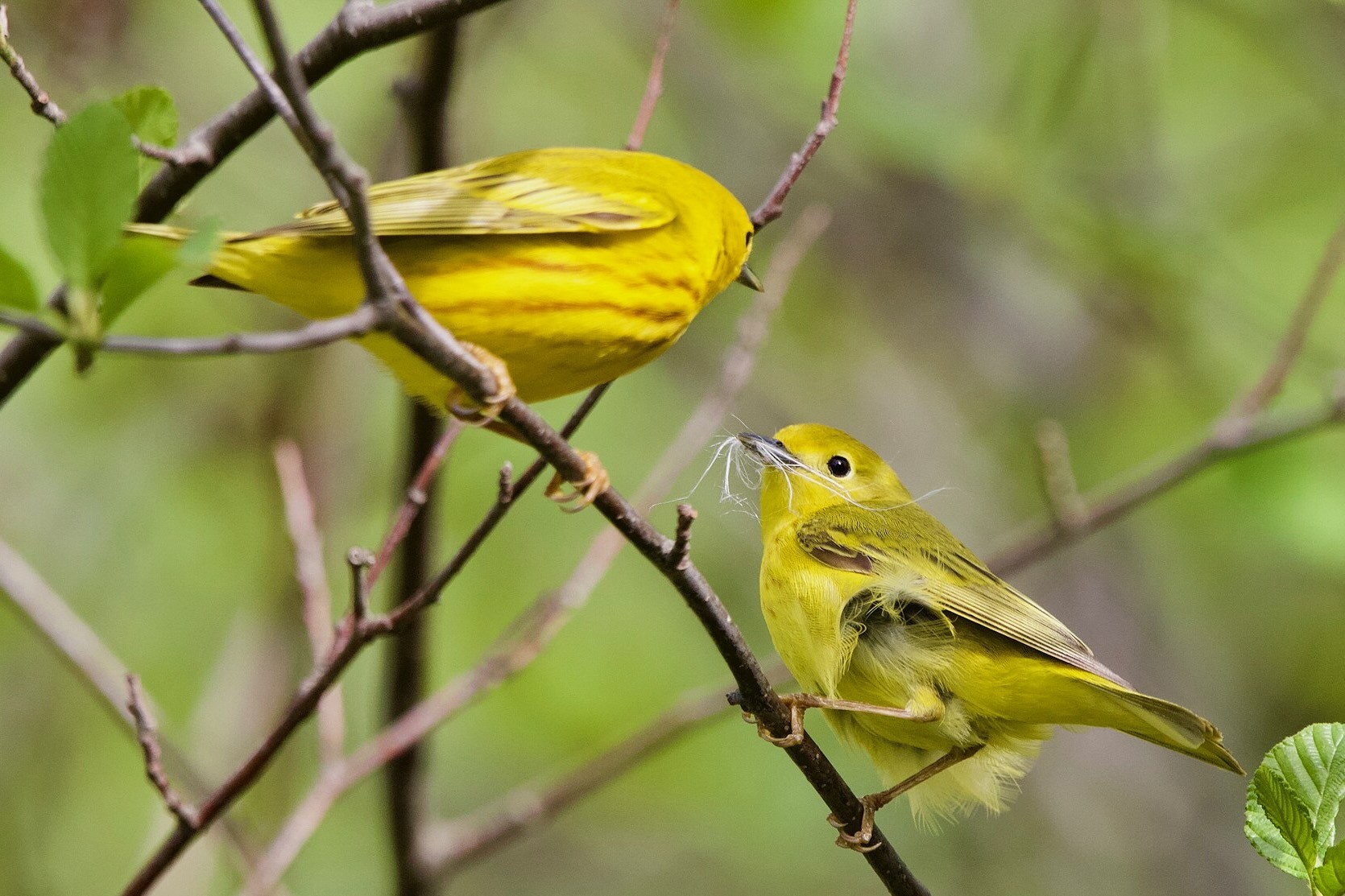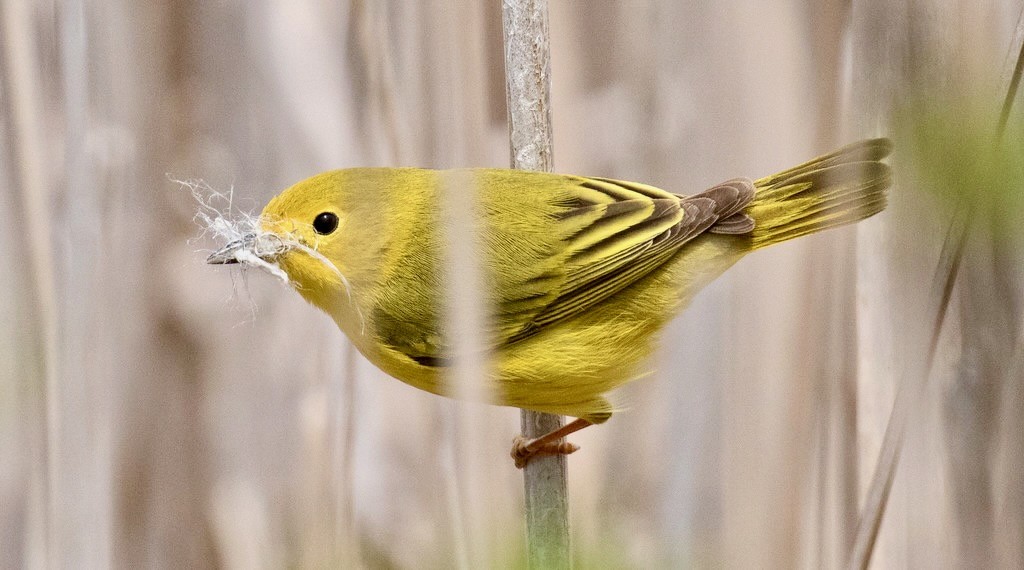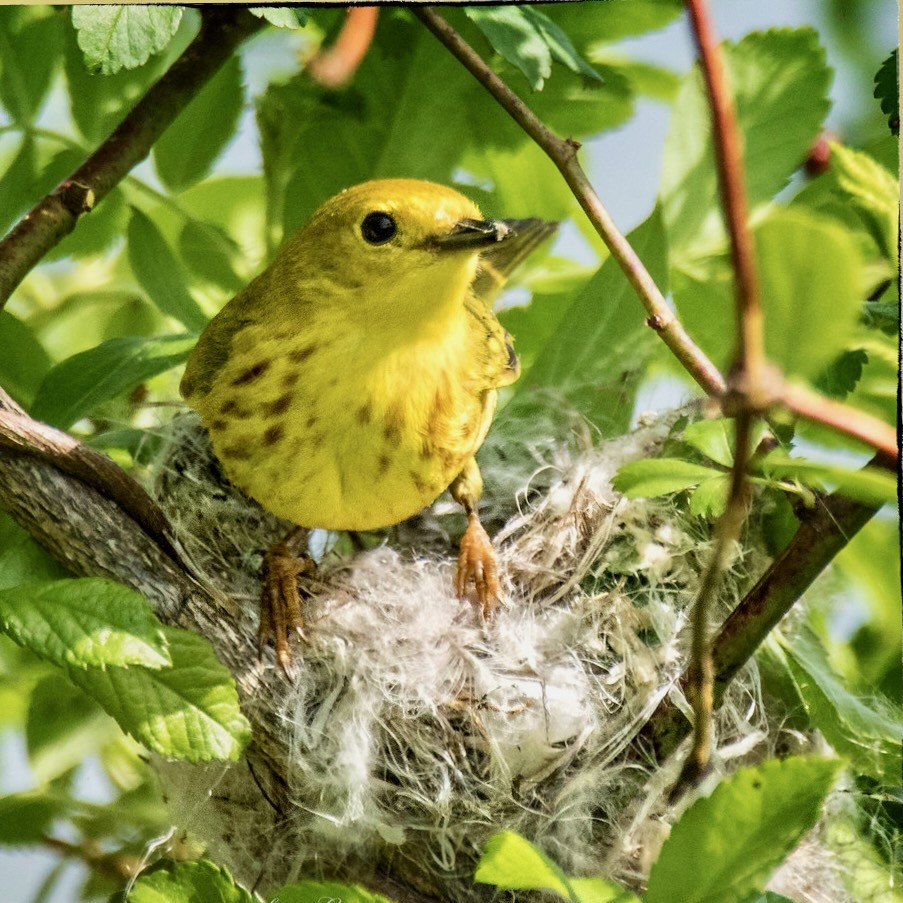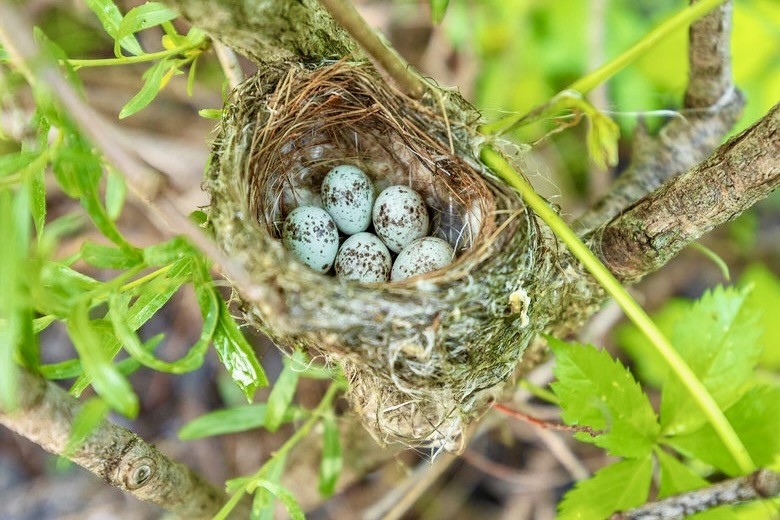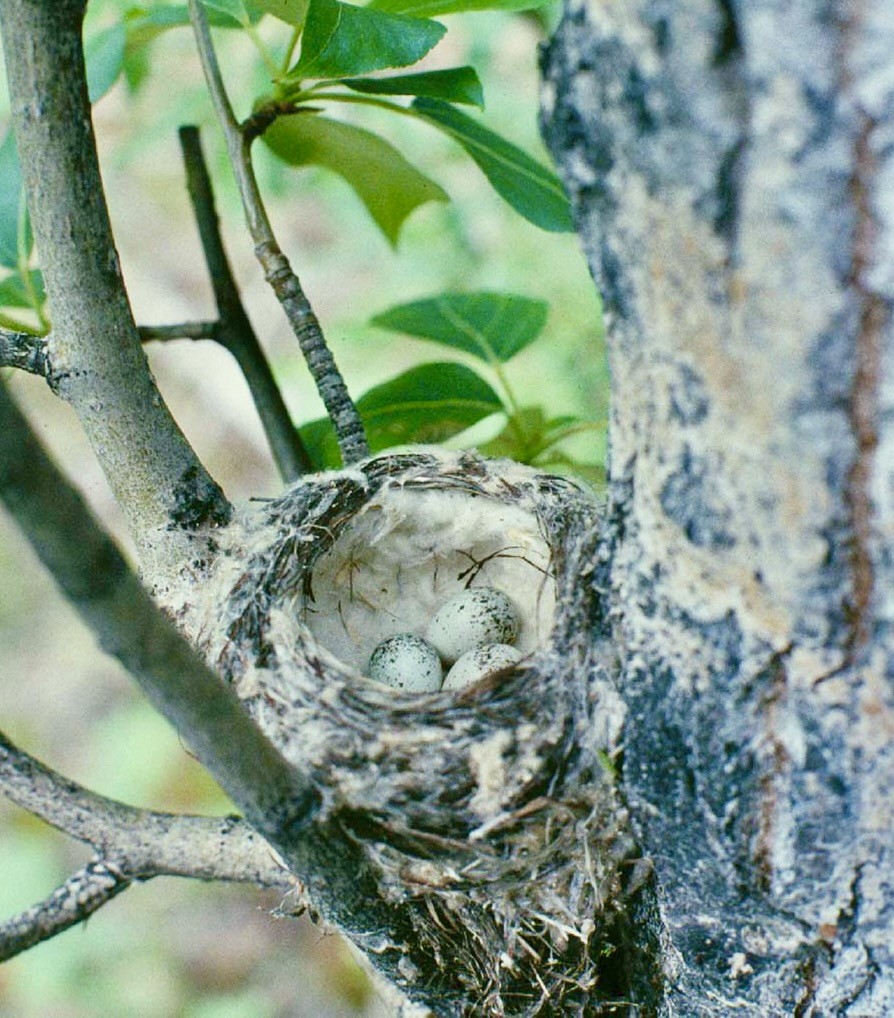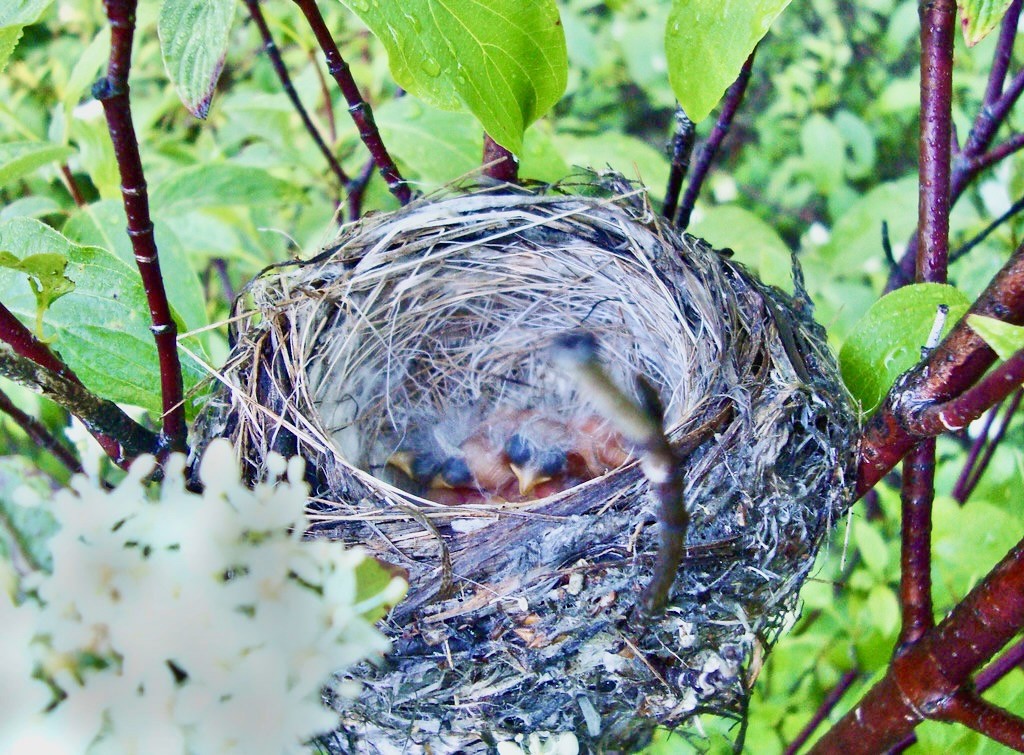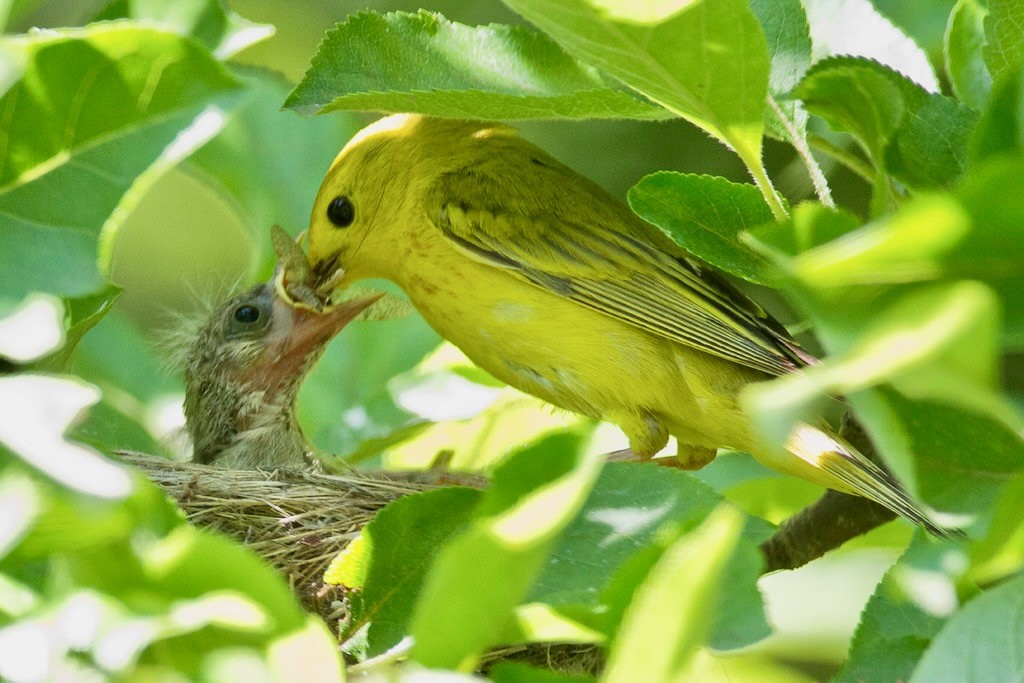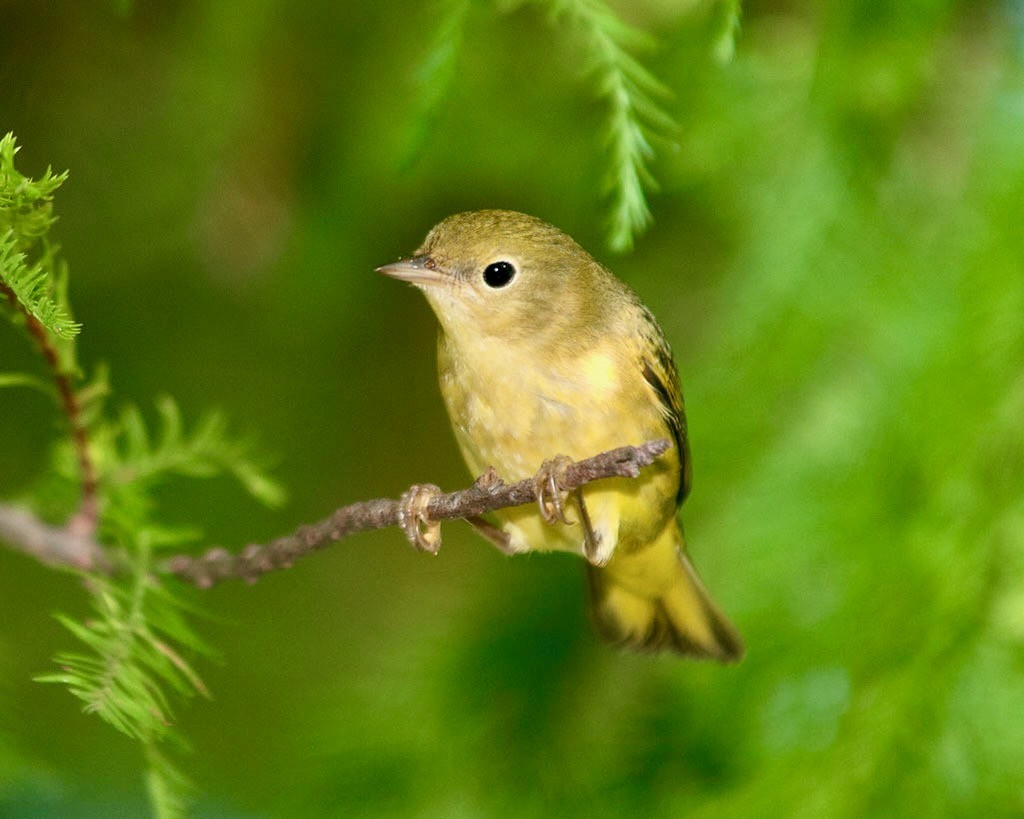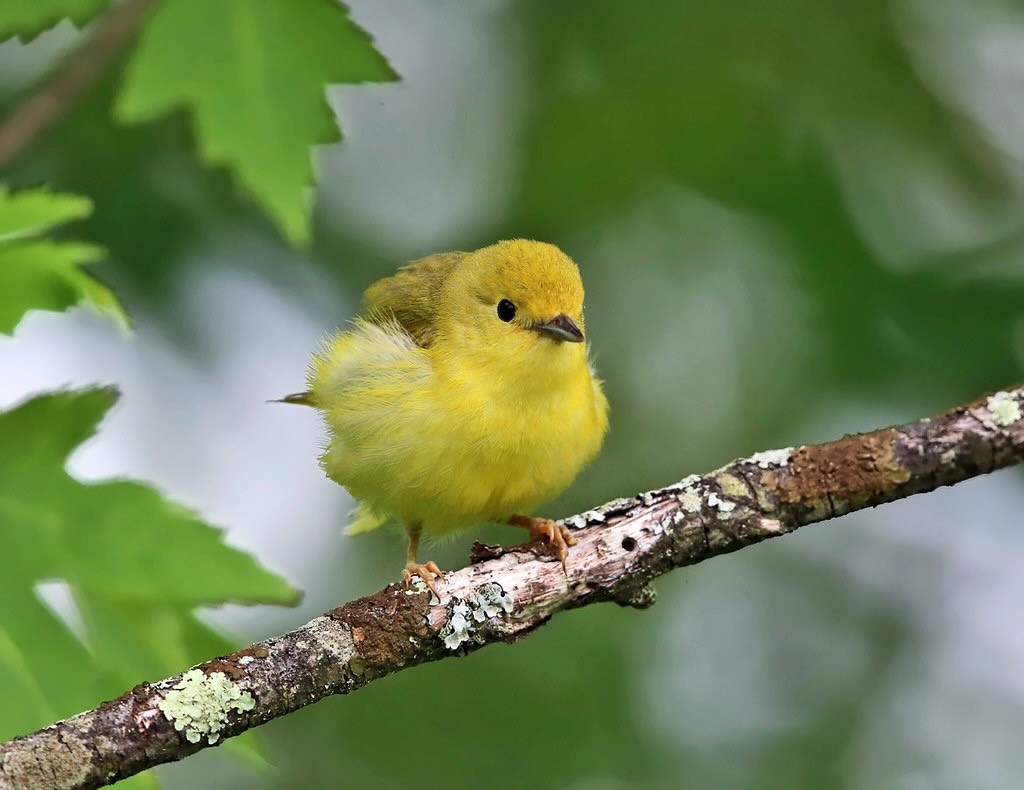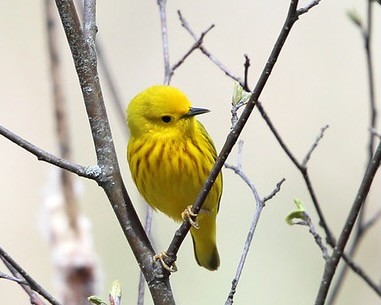Yellow Warbler
The Yellow Warbler comes to breed at Salter Grove every year. It can be heard or seen from late April to early August in the northern marshy area, in the woods along the vernal pond, as well as along the southern end of the Marsh Trail.
It is one of the most widely distributed warblers, nesting from the Arctic Circle to Mexico in a variety of moist habitats with thickets of small trees. It is truly a long-distance migrant. Wintering populations are found in southern California, southern Florida, and south through the Brazilian Amazon, to Bolivia, and Peru.
Since the insectivorous Yellow Warbler eats mostly caterpillars and insects, it is not attracted to backyard feeders. Nonetheless, it is an easy bird to recognize as flashes of brilliant yellow as it forages in thickets of small trees near lakes, marshes, swamps or streams. The male's insistent refrain of "sweet-sweet-sweet, I'm-so-sweet" can be heard through late spring and early summer.
Because its nests are often along the edge of woody vegetation, it is a popular target of the Brown-headed Cowbird, a brood parasite that evades parental responsibility by laying eggs in the nest of other bird species. However, unlike other bird species that do not appear to perceive the reproductive threat, the Yellow Warbler takes action.
When cowbirds are present It gives alarm calls that will even alert Red-winged Blackbirds nesting nearby. If there is a cowbird egg found in its nest, the Yellow Warbler may abandon the nest and build a new one elsewhere. Alternatively, it may smother the cowbird egg with another nest on top--the record is a six-tier nest.
Because it favors second-growth habitat, it is not vulnerable to loss of old-growth habitat. However, with the warming climate, populations will likely leave Rhode Island over time as it expands its breeding range northward to northern Canada and Alaska.
For more information:
https://www.allaboutbirds.org/guide/Yellow_Warbler
https://www.audubon.org/field-guide/bird/yellow-warbler
https://en.wikipedia.org/wiki/Yellow_warbler
https://animaldiversity.org/accounts/Dendroica_petechia/
https://www.birdsbybent.com/////ch31-40/ywarbler.html
Clarkson, C. E., Osenkowski, J. E., Steen, V. A., Duhaime, R. J., and Paton, W.C. (2023) The Second Atlas of Breeding Birds in Rhode Island. Rhode Island Department of Environmental Management Division of Fish and Wildlife. pp. 394-395.
Howe, Jr., R.H. and Sturtevant, E. (1899) The Birds of Rhode Island. pp. 16, 86.

